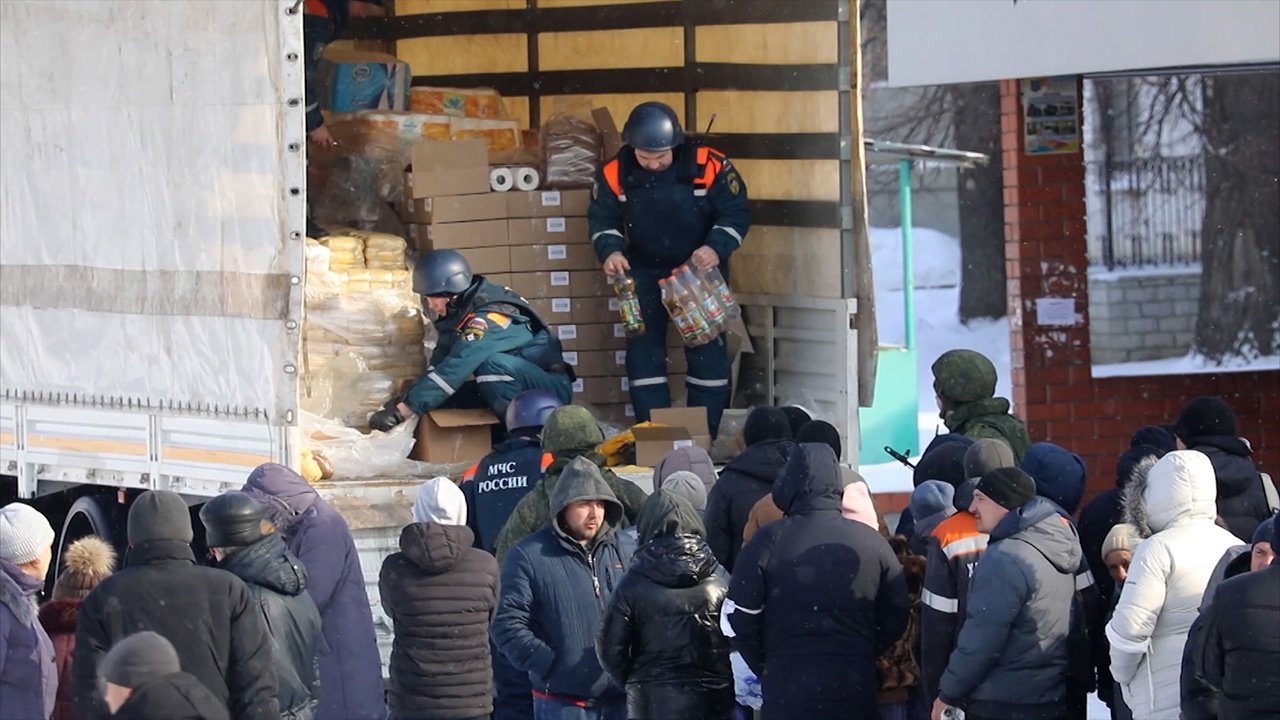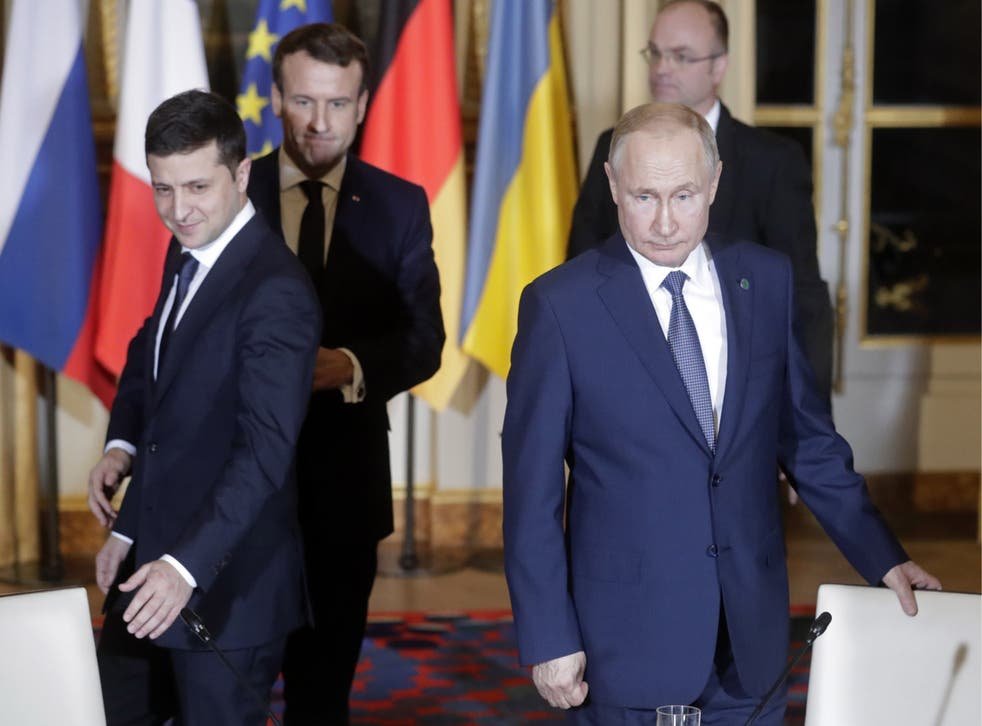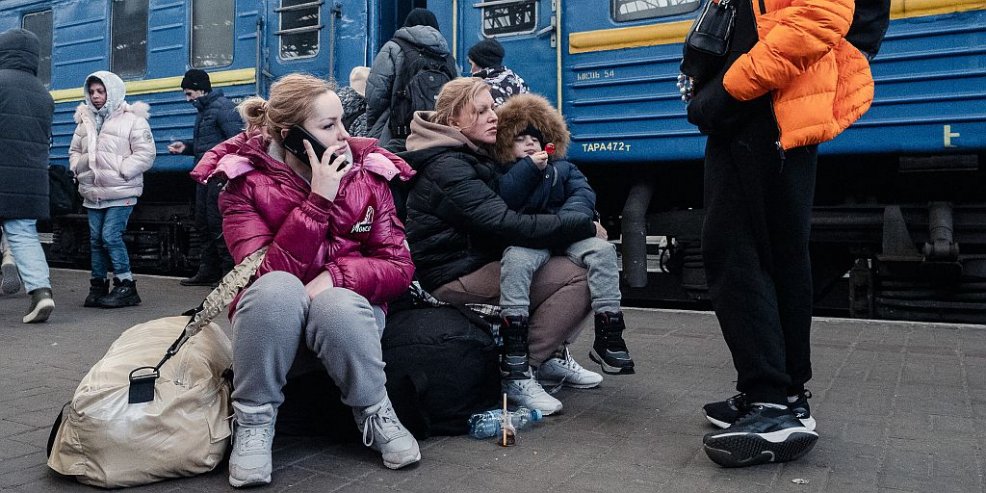Armenia-Azerbaijan is not a war for a piece of land, but a war for Existence of Armenian Christians from the threat posed by Neo-Ottoman Empire of Turkey. Don’t fall in Propaganda of Turkey, Azerbaijan or Pakistan that are using Terrorist forces.
If someone does not understand why Armenia is a “bone in the throat” of Turkey, loot at the following map.

Armenia is a small country with a population of only 3 Million and a territory of only 29,743 km² and GDP of only $12 Billion. Artsakh is a small area of only 11,458 km². These are the areas that Armenian Christians got shelter while fleeing the mass murder of 1.5 Million Armenians by Ottoman Empire. Doesn’t it remind you of the similar holocaust and Genocide seen by Jews and finally making Israel as their home?

Why do these big countries of Azerbaijan (86,600 km²) and Turkey (783,562 km²) want to exterminate Armenian Christians that have a unique and distinct culture? Turkey does not believe in Religion. It believes in supremacy of Turk race. Turkey uses religious overtures from time to time to unite the Islamic Radical Terrorist forces from around the world including Syria, Iran, Libya, Pakistan and other countries.
Neo-Ottoman extermination strategy is not focused on Religion rather on Racial, Ethnical factors. They used curd mercenaries as “fellow Muslims” during Armenian genocide, and now they fight them in Syria, and even within their own territory.
Related Article Turkey And Pakistan Sending Terrorists to Azerbaijan to Fight Armenia
You may have seen the recent campaign of Azerbaijan about the territory of Artsakh. Here are some facts about the cultural heritage in case someone questions that Artsakh is historically Armenian land and Armenian people and culture are present there for ages.
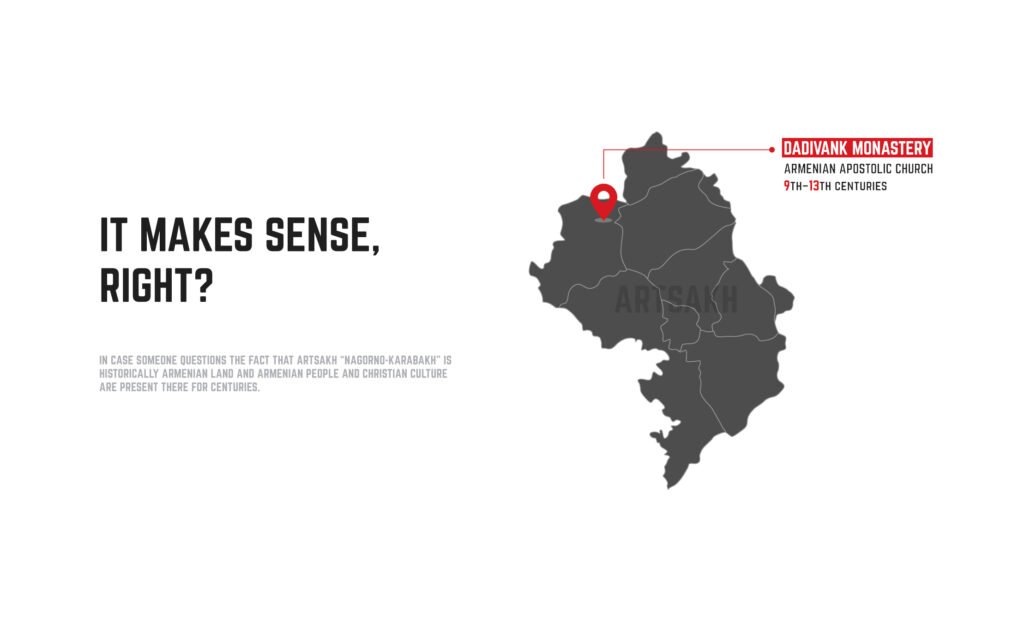
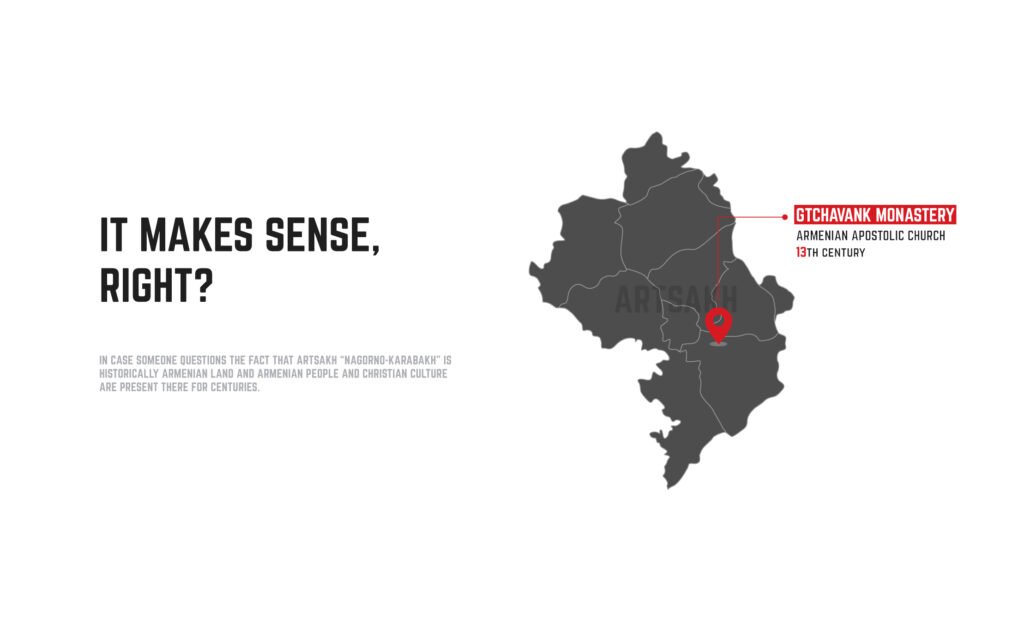
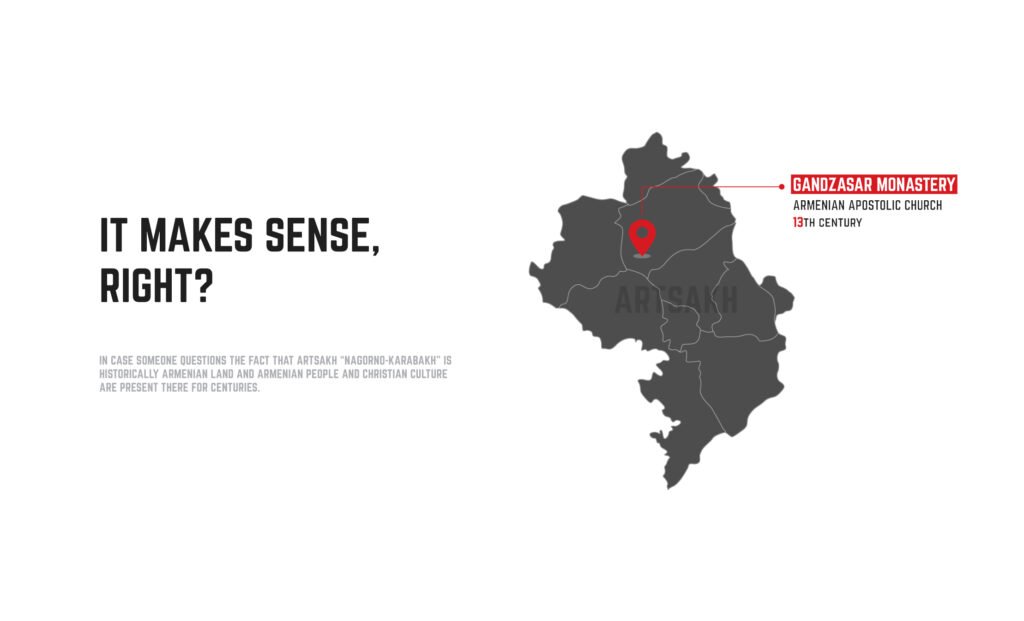
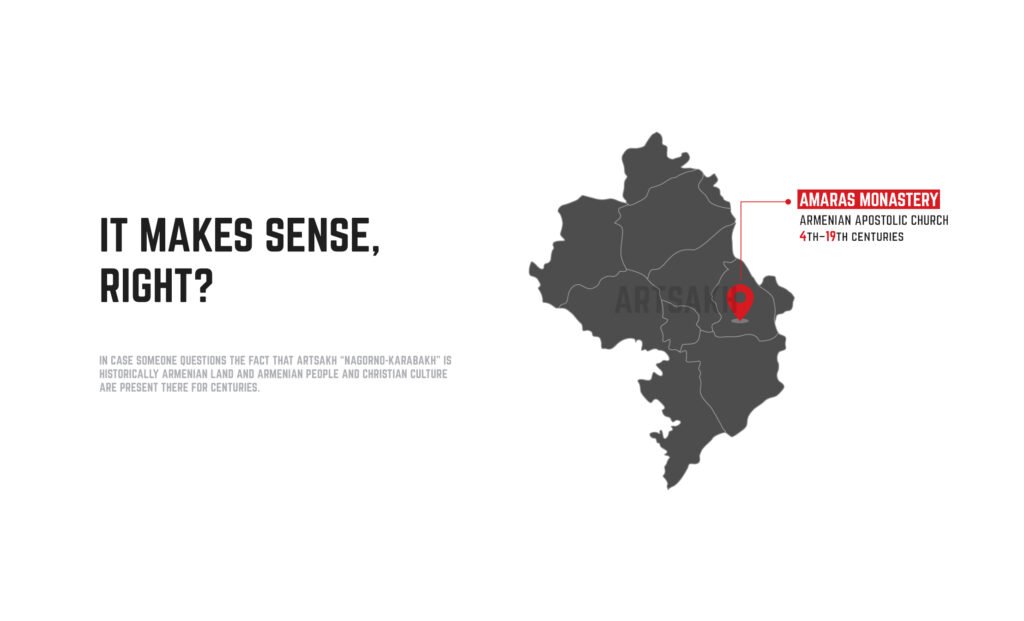
Amaras Monastery is located 10km south of Martuni, in the ravine between the Khazagh and Lusavorich mountains. The monastery was founded in 4th century by St. Gregory the Illuminator and completed by his grandson, Grigoris, the first bishop of Artsakh. Throughout history, Amaras Monastery was attacked repeatedly by invaders. The Monastery suffered great destruction at the hands of the Turks, Seljuks, Tatars and Mongols.

We covered in details about the misinformation propaganda by Turkey, Azerbaijan and Pakistan in our previous article War Updates : Turkey and Azerbaijan Indulge In Disinformation Propaganda
Armenia-Azerbaijan Is Not A War For A Piece Of Land – Know the True History
Artsakh (Karabakh) is an integral part of historic Armenia. During the Urartian era (9-6th cc. B.C.) Artsakh was known as Urtekhe-Urtekhini. As a part of Armenia Artsakh is mentioned in the works of Strabo, Pliny the Elder, Claudius Ptolemy, Plutarch, Dio Cassius, and other ancient authors. The evident testimony of it is the remained rich historic-cultural heritage.
After the division of Greater Armenia (387 A.D.), Artsakh became part of the Eastern Armenian kingdom, which soon fell under the Persian rule. At that time, Artsakh was a part of the Armenian marzpanutyun (province), then, in the period of Arabic rule, it was part of Armenia kusakalutyun (region). Artsakh was part of the Armenian kingdom of Bagratids (9-11th cc.), then – part of Zakarid Armenia (12-13th cc.).
In following centuries, Artsakh fell under the rule of various conquerors, remaining Armenian and having a semi-independent status. Since the mid-18th century the invasion of Turkic nomadic tribes to the north of Karabakh began, which led to clashes with local Armenians. During this period, the five Armenian melikdoms (Hams) are memorable which had reached the peak of their prosperity and power in the late 18th century. At the end of the Russian-Persian War of 1804-1813 and by the Gulistan treaty of 1813, Artsakh-Karabakh was annexed to Russia.
Pre-soviet era
Nagorno-Karabakh conflict began in 1917, during the formation of three ethnic republics of Transcaucasia – Armenia, Azerbaijan and Georgia, as a result of the collapse of the Russian Empire. The population of Nagorno-Karabakh, 95 percent of which were Armenians, convened its first congress, which proclaimed Nagorno-Karabakh an independent political unit, elected the National Council and the Government. In 1918-1920 Nagorno-Karabakh had all the trappings of statehood, including the army and the legitimate authority.
In response to the peace initiatives of the people of Nagorno-Karabakh, Azerbaijani Democratic Republic launched a military action. From May 1918 to April 1920, Azerbaijan and military units of Turkey, which supported Azerbaijan, used violence and carried out massacres against the Armenian population (in March 1920 about 40,000 Armenians were killed and deported only in Shushi). But it was not possible to make the people of Nagorno-Karabakh obey Azerbaijan’s power in this way.
In August, 1919, in order to prevent military conflict, Karabakh and Azerbaijan, signed a preliminary agreement by which they agreed to discuss the problem of the status of the region at Paris Peace Conference.
Response of the international community is memorable. The League of Nations rejected the request for Azerbaijan’s membership, citing the fact that it is difficult to define clear boundaries and territories under the sovereignty of this state. Among other contentious issues there was the issue of the status of Nagorno-Karabakh. Because of the sovietization of the region the issue fell out of the agenda of international organizations.
Nagorno-Karabakh in the soviet period (1920-1990)
The establishment of Soviet rule in Transcaucasia was accompanied by the creation of a new political system. Nagorno-Karabakh has been recognized a disputed territory between Armenia and Azerbaijan also by Soviet Russia. According to the agreement signed in August 1920 between Soviet Russia and the Armenian Republic, Russian troops were temporarily deployed in Nagorno-Karabakh.
Immediately after the establishment of the Soviet regime in Armenia, on November 30, 1920, the Azerbaijan Revcom (Revolutionary Committee – the main Bolshevik instrument of power at that time) made a declaration recognizing territories over which Azerbaijan had claims – Nagorno Karabakh, Zangezour, and Nakhijevan, as inseparable parts of Armenia.
The National Council of Azerbaijan SSR, on the basis of the agreement between the Azerbaijan Revcom and the governments of Azerbaijan SSR and Armenian SSR, the Declaration of June 12, 1921, proclaimed Nagorno-Karabakh an integral part of the Armenian SSR.
Based on the statement of Soviet Azerbaijan waiver of Nagorno-Karabakh, Zangezour and Nakhichevan and the agreement between the governments of Armenia and Azerbaijan from June of 1921, Armenia also declared Nagorno-Karabakh her integral part.
The text of the decree issued by the Armenian government was published in both Armenian and Azerbaijani media (“Baku Worker” organ of the Central Committee of the Azerbaijan Communist Party, June 22, 1921). Thus, a legal confirmation of the unification of Nagorno Karabakh to Armenia took place.
Within the context of international law and norms (in the international legal sense), it was the last legal act on Nagorno-Karabakh during the communist regime.
Ignoring the reality, on July 4, 1921, in the capital of Georgia, Tbilisi, the Caucasian Bureau of the Communist Party of Russia convened a plenary session, during which the fact that Nagorno-Karabakh is part of the Armenian SSR was reconfirmed. However, under the dictation of Moscow and Stalin’s direct interference, on the night of July 5 the decision of the previous day was reviewed and the forced decision of incorporating Nagorno-Karabakh to Azerbaijan and forming on its territory an autonomous oblast was made, not even keeping procedure. This decision is an unprecedented legal act in the history of international law, when the party organ of a third country (RK(b)P) without any legal basis or authority determines the status of Nagorno-Karabakh.
In December, 1922 Azerbaijani and Armenian SSR were included in the formation processes of the USSR, and only on one part of the territory of Karabakh on July 7, 1923, by decision of the Central Executive Revolutionary Committee of Azerbaijan SSR the Nagorno-Karabakh Autonomous Oblast was formed, within Azerbaijan SSR, by which, in fact, the Karabakh conflict was not resolved, but temporarily frozen. Moreover, everything was done so that Nagorno-Karabakh Autonomous Oblast had no common border with Armenia.
But during the entire Soviet period, the Armenians of Nagorno-Karabakh never put up with this decision, and for decades struggled for reunification with the motherland.
Related Article Turkish Hypocrisy: Do To Hagia Sophia, What They Complain To The World
During the entire period of being of Nagorno-Karabakh Autonomous Oblast within Azerbaijan SSR, the leadership of this republic had been regularly and consistently violating the rights and interests of the Armenian population. Discriminatory policies by Azerbaijan against Nagorno-Karabakh was reflected in attempts of artificially suspending the social-economic development of the region, turning it into a raw materials appendage, actively intervening in the demographic process aimed at ethnic cleansing, destructing and misappropriating Armenian monuments and cultural values.
Discrimination from Azerbaijan towards Nagorno-Karabakh had its impact on the population of Karabakh and became the main reason of latter’s migration. As a result, the correlation of the Karabakh population changed: if in 1923 Armenians amounted to 94,4 percent of the population of Nagorno Karabakh, according to 1989 statistics the number of Armenians had reduced to 76,9 percent. The policy of ethnic cleansings had more success on another Armenian territory, in Nakhichevan.
The people of NKAO and authorities of Armenian SSR had sent lots of applications to the Soviet central authorities asking about the reconsideration of the decision on incorporating Nagorno-Karabakh to Azerbaijan, which were ignored or rejected, causing persecutions against the initiators. Among these applications are the application of the Government and the Communist Party Central Committee of Armenian SSR from 1945 to the Government of the USSR and the All-Union Communist Party Central Committee, more than 2.5 thousand in 1963 and more than 45 thousand signed letters in 1965 from the NKAO population addressed to Soviet leadership, offers of NKAO working groups within the USSR-wide discussions on a new constitution in 1977.
Related Article Neo-Ottoman Dream – End Of Turkey And Erdogan
Current stage of Nagorno-Karabakh conflict
The current phase of Nagorno-Karabakh conflict began in 1988, when in response to the self-determination claims of NK population the Azeri authorities organized massacres and ethnic cleansing of the Armenian population on the entire territory of Azerbaijan, particularly in Sumgait, Baku and Kirovabad.
On December 10, 1991 NK population declared the establishment of the Nagorno Karabakh Republic (NKR) by plebiscite, which fully complies with both international law norms and the letter and spirit of the USSR laws of that time. Thus, on the territory of the former Azerbaijani SSR two equal state formations were created – Nagorno-Karabakh Republic and the Republic of Azerbaijan.
In Nagorno-Karabakh and surrounding areas populated by Armenians the policy pursued by Azerbaijani authorities turned into overt aggression and large scale military actions against the Republic of Nagorno-Karabakh, which resulted in tens of thousand deads and caused considerable material damage.
Azerbaijan never heeded the international community appeals, particularly the United Nations Security Council resolutions relating to Nagorno-Karabakh conflict calling to stop military actions and conduct peaceful negotiations.
Because of the war Azerbaijan occupied the whole region of Shahumyan, and the eastern parts of Martakert and Martuni regions of Nagorno-Karabakh. Neighboring districts went under the control of Nagorno-Karabakh armed forces, which played a role of a security buffer to block the further firing from the Azeri side towards Nagorno-Karabakh settlements.
Related Article Erdogan’s Imperialist Neo-Ottoman Empire: Who is Financing it?
In May, 1994 Azerbaijan, Nagorno-Karabakh and Armenia signed a ceasefire, which, despite violations, is still effective.
Conflict settlement negotiations are held in the framework of the OSCE Minsk Group (Russia, USA, France). In the last decade, several options for the settlement proposed by the co-chairs were rejected by Azerbaijan. The last was “Paris Principles” in 1991 which were summed up in the Key West document.
Currently, negotiations are held on the basis of the Madrid proposals represented by co-chairs in November, 2007.
Despite the negotiations held within the framework of the OSCE Minsk Group which is the only internationally mandated format on conflict settlement, and the agreement to carry out negotiations within the Minsk process, Azerbaijan, distorting the nature and main reasons of the consequences of the conflict, takes attempts to involve other international organizations in the settlement and initiates parallel processes hindering the negotiation process and having campaign objectives especially in the UN GA and the Council of Europe, too.
Azerbaijan’s aggressive bellicose campaign also puts under question Azerbaijan’s desire, statements, assumed obligations and their seriousness aimed at compromise settlement. Azerbaijan continues sending money from oil revenues to increase the military budget and to the acquisition of large number of offensive armaments, grossly violating a number of agreements and obligations in the sphere of security and political-military sphere. In fact, Azerbaijan fails all the economic, political, military and humanitarian initiatives aimed at strengthening trust between the parties. Particularly, Azerbaijan rejects the offer of the Armenian side on regional cooperation and the offer of the Minsk Group to pull out snipers from the contact line.
Related Article Belligerent Imperialist Turkey Threatens to Invade whole of Cyprus
Position of Armenia on Nagorno-Karabakh conflict
Armenia believes that the improvement of the peace process efficiency is impossible without full participation of the conflict party Nagorno-Karabakh in the negotiations. Armenia believes that the conflict settlement should be based on the following principles:
Nagorno-Karabakh conflict settlement must be based on recognition of the Nagorno-Karabakh people’s right to self-determination;
Nagorno-Karabakh should have uninterrupted land communication with Armenia, under jurisdiction of the Armenian side;
the security of Nagorno-Karabakh should be internationally guaranteed.
Adoption of these principles and contractual stipulation will enable achieving a comprehensive settlement of the problem.
Armenia attaches importance to the mediation of the OSCE Minsk Group in the Nagorno-Karabakh conflict settlement process, as a viable format for the settlement which has enough potential to find ways of settlement.
Armenia seeks a settlement exclusively through peaceful means.
Azerbaijan’s attempts to get unilateral concessions by the threat of use of force are not only doomed to failure from the beginning, but also continue to be the main obstacle for the settlement through compromise.
Nagorno-Karabakh has no future as a part of Azerbaijan and whatever is the solution, it must emanate from the will of the Karabakh people. That is the essence of the right of peoples to self-determination. Azerbaijan has neither legal nor political or moral grounds to claim over Nagorno-Karabakh.
Related Article Iran-China Deal : Disaster for Middle East, Mourning in Pakistan
Points to Ponder
Question – If Israel claims that Israel was the ancient land of Jews and is the only country of Jews, Why is the world not able to understand that Armenia and Nagorno-Karabakh is the only land of Armenian Christians that have their own disctinct ancient culture.
Why Does Radical Islamist Turkey using the Terrorist Resources from Syria, Pakistan and other countries want to destroy this unique culture?
Is it because the Neo-Ottoman Empire envisioned by Erdogan does not bear any other culture to co-exist?
Has the Radical Islamist Neo-Ottoman decided to exterminate Christianity in the Region?
Question to the Christian West and the United States. Is it alright to see Ancient Christian culture in Armenia mowed down by Radial Islamist Terrorist Forces of Turkey, Syria, Azerbaijan and Pakistan while the Christian West supports the same Radical Islamist Terrorist Forces to commit Genocide of the Ancient Armenian Christian culture? Will the world favor the Terrorist Forces or will protect the vulnerable land locked Armenia that is being mowed down by Terrorist forces from Turkey, Syria, Libya, Pakistan, Azerbaijan?
World needs to understand that Armenia-Azerbaijan is not a War for a piece of land, But a war for existence of Armenian Christians from Neo-Ottoman Empire Genocide.
Follow us at:-
Twitter Handle: @newscomworld
Instagram Handle: @newscomworld
Parler Handle: @newscommuniquecom
Subscribe our : YouTube Channel https://www.youtube.com/channel/UCnKJQ3gFsRVWpvdjnntQoAA
Like our Facebook Page https://m.facebook.com/News-Communiquecom-103788531007438/
33,735 total views




